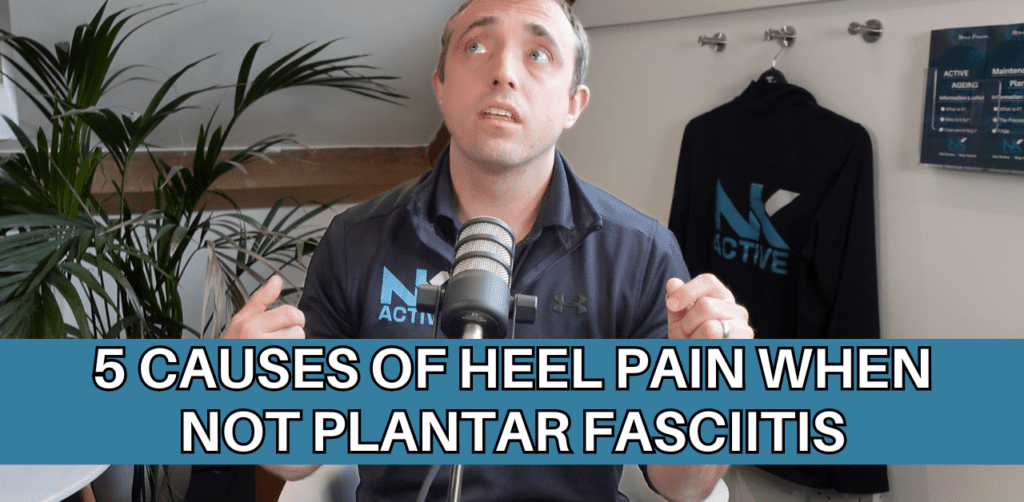
5 causes of heel pain when it’s not Plantar Fasciitis
Heel pain is a prevalent issue, often leading many to conclude they’re suffering from plantar fasciitis. However, numerous conditions can mimic the symptoms of this common foot problem. Understanding the various causes of heel pain is crucial for effective treatment and management. In todays episode of the NK Active podcast Nick delves into five distinct conditions that can cause heel discomfort, not related to plantar fasciitis, including one specific to children.
1. Achilles Tendinopathy
A common misdiagnosis among individuals with heel pain is plantar fasciitis, when in fact, Achilles tendinopathy might well be the culprit. This condition shares similar symptoms with plantar fasciitis, such as stiffness in the morning or after rest and general discomfort around the heel. However, a key distinguishing feature is the location of the pain. Unlike plantar fasciitis, which affects the bottom of the foot and arch, Achilles tendinopathy causes pain at the back of the heel and can extend up the leg.
2. Calcaneal Apophysitis in Children
Exclusive to children, particularly those between the ages of 9 and 13 who are active in sports, Calcaneal Apophysitis (also known as Sever’s disease) is related to growth plate inflammation. This condition results from the Achilles tendon pulling on the heel’s growth plate, leading to pain, especially with activity. Though it tends to resolve by age 15, interventions like heel raises, calf strength exercises, and flexibility improvements can provide relief.

3. Retrocalcaneal Bursitis
Another condition often mistaken for plantar fasciitis is retrocalcaneal bursitis. It differs by the absence of morning stiffness and an acute onset of pain. This condition involves irritation of a fluid-filled sac behind the heel bone, aggravated by ankle movements or walking uphill. Management strategies include using insoles to offload the area, improving calf strength, flexibility exercises, and sometimes injections to alleviate discomfort.
4. Tarsal Tunnel Syndrome
Tarsal Tunnel syndrome, characterised by a tibial nerve impingement, presents differently from plantar fasciitis. It does not cause aching or stiffness but may lead to weakness, sharp pain, or numbness in the ankle and foot. Treatment often involves exercise, footwear adjustments, and possibly steroid injections or surgical release if conservative measures fail.
5. Fracture or Bony Bruising
Traumatic fractures or bony bruising of the heel are other potential sources of heel pain. These conditions result from significant impact or repetitive stress, respectively. Symptoms include intense pain upon standing or squeezing the heel, which can be particularly severe in the case of fractures. Rest, immobilisation, and gradual rehabilitation are key to recovery.
Heel Spurs: Myth vs. Reality
Heel spurs, often linked to heel pain, are actually not a common cause of discomfort. Current evidence suggests that most heel spurs do not contribute to heel pain as they grow along the foot’s plane, not downwards into it. Only in rare cases where the spur grows vertically might it cause irritation, requiring accommodative insoles or surgical intervention.
In conclusion, heel pain is a multifaceted issue with various potential causes beyond plantar fasciitis. Accurate diagnosis is crucial for effective treatment, highlighting the importance of professional evaluation for individuals experiencing heel discomfort.
Listen to the latest episode of the NK Active podcast here on your chosen platform – https://kite.link/nk-active or watch the YouTube video below.
